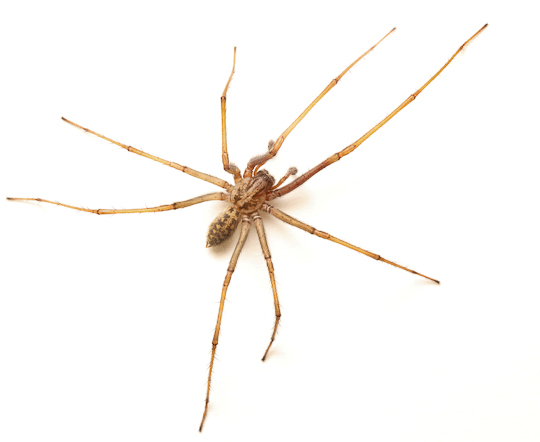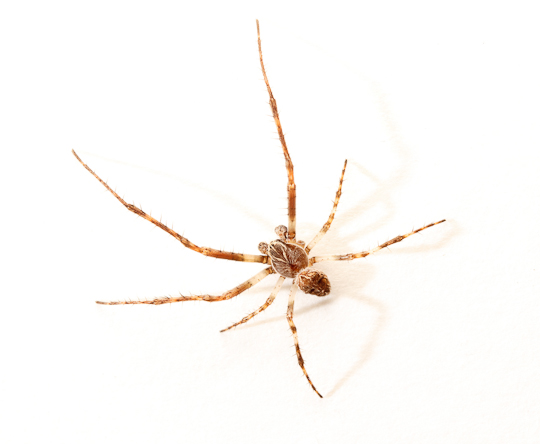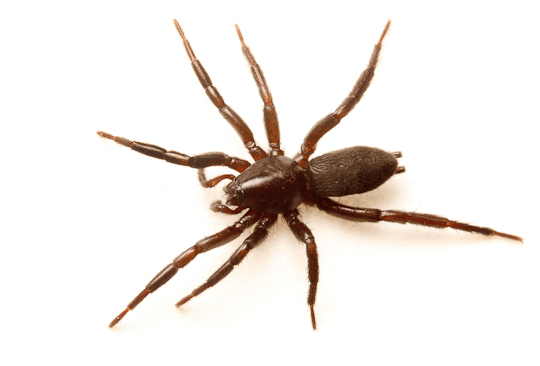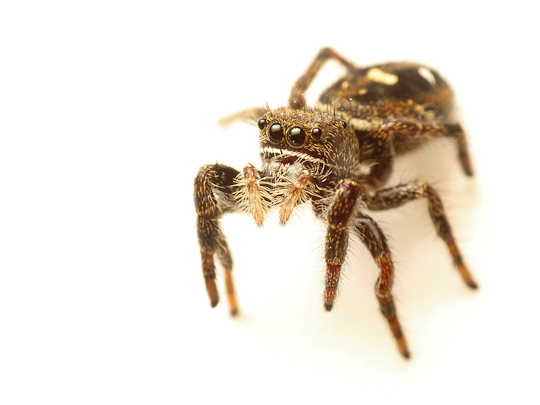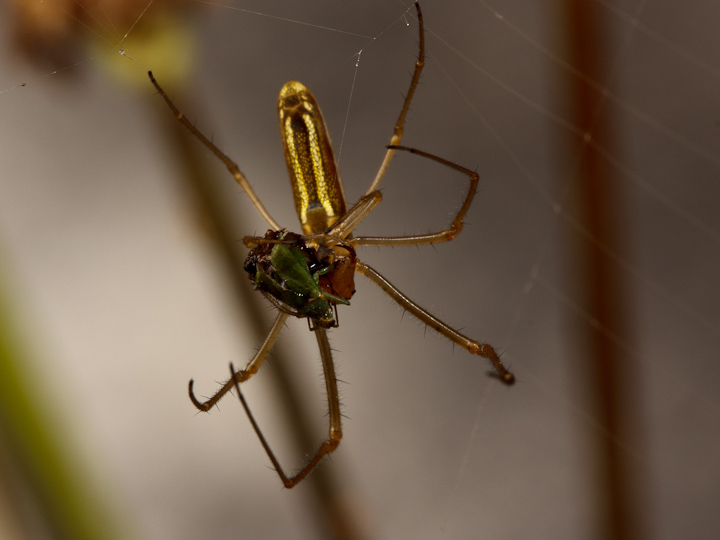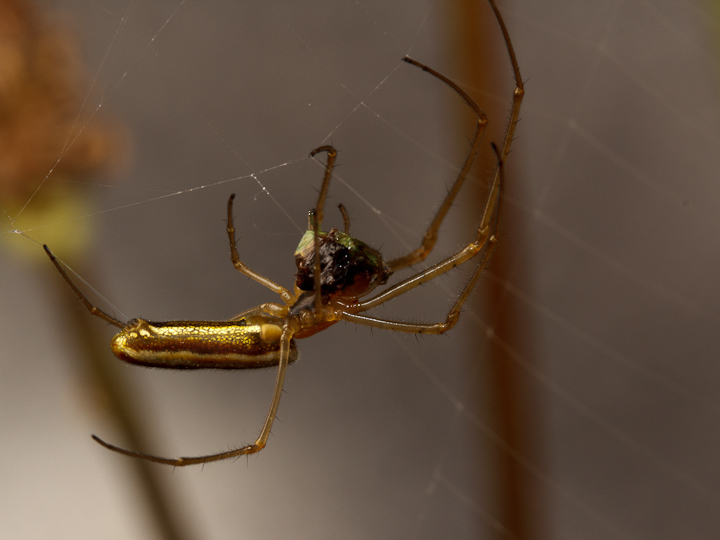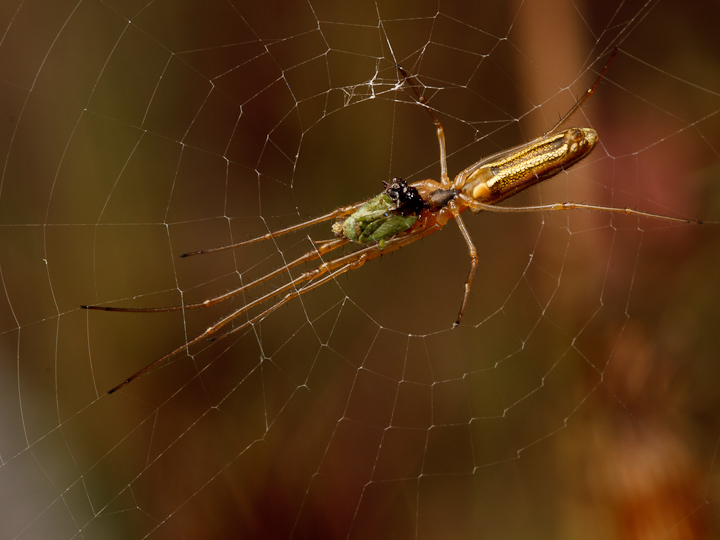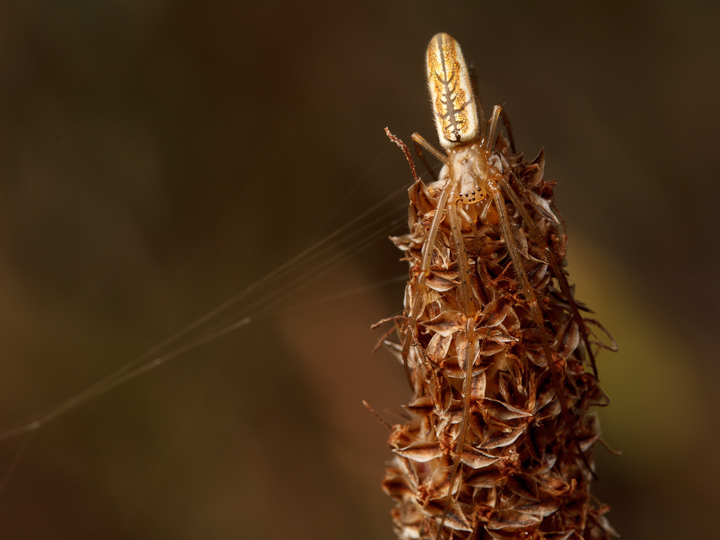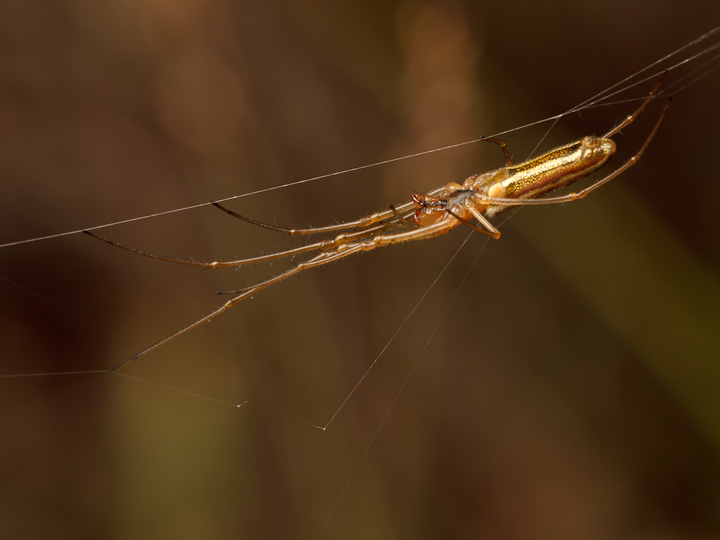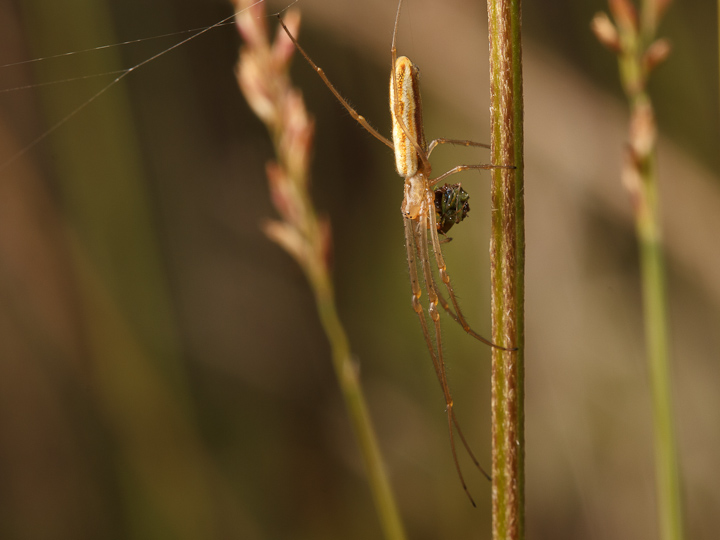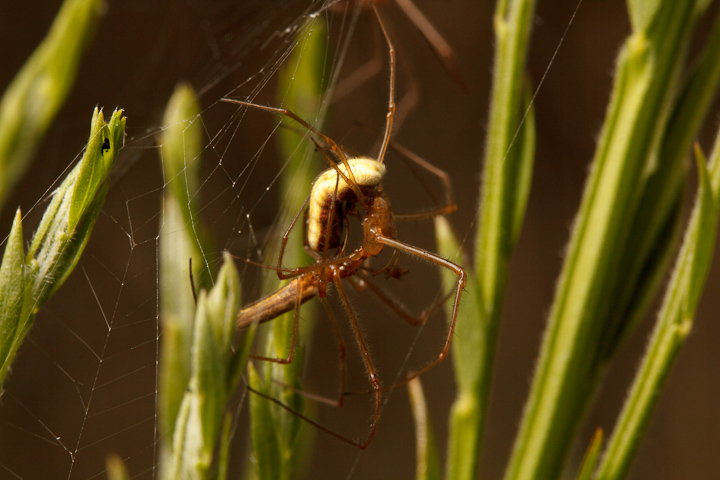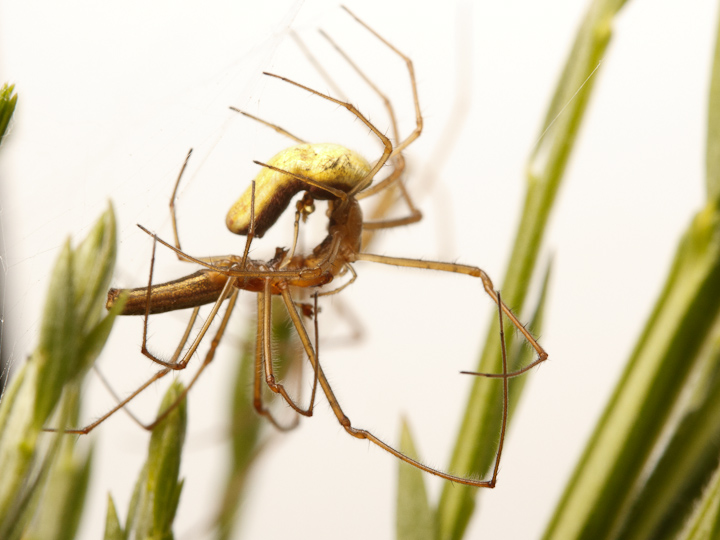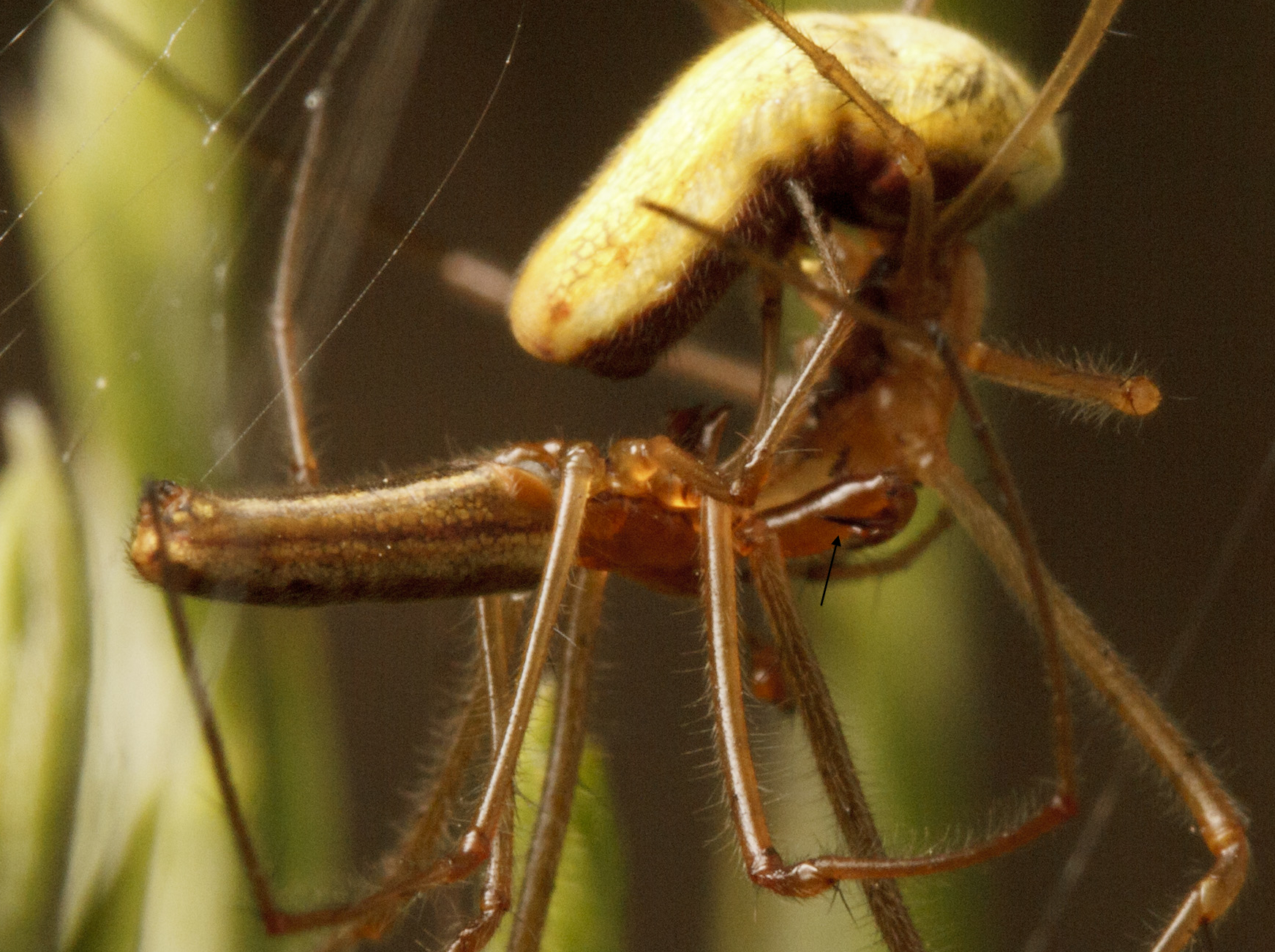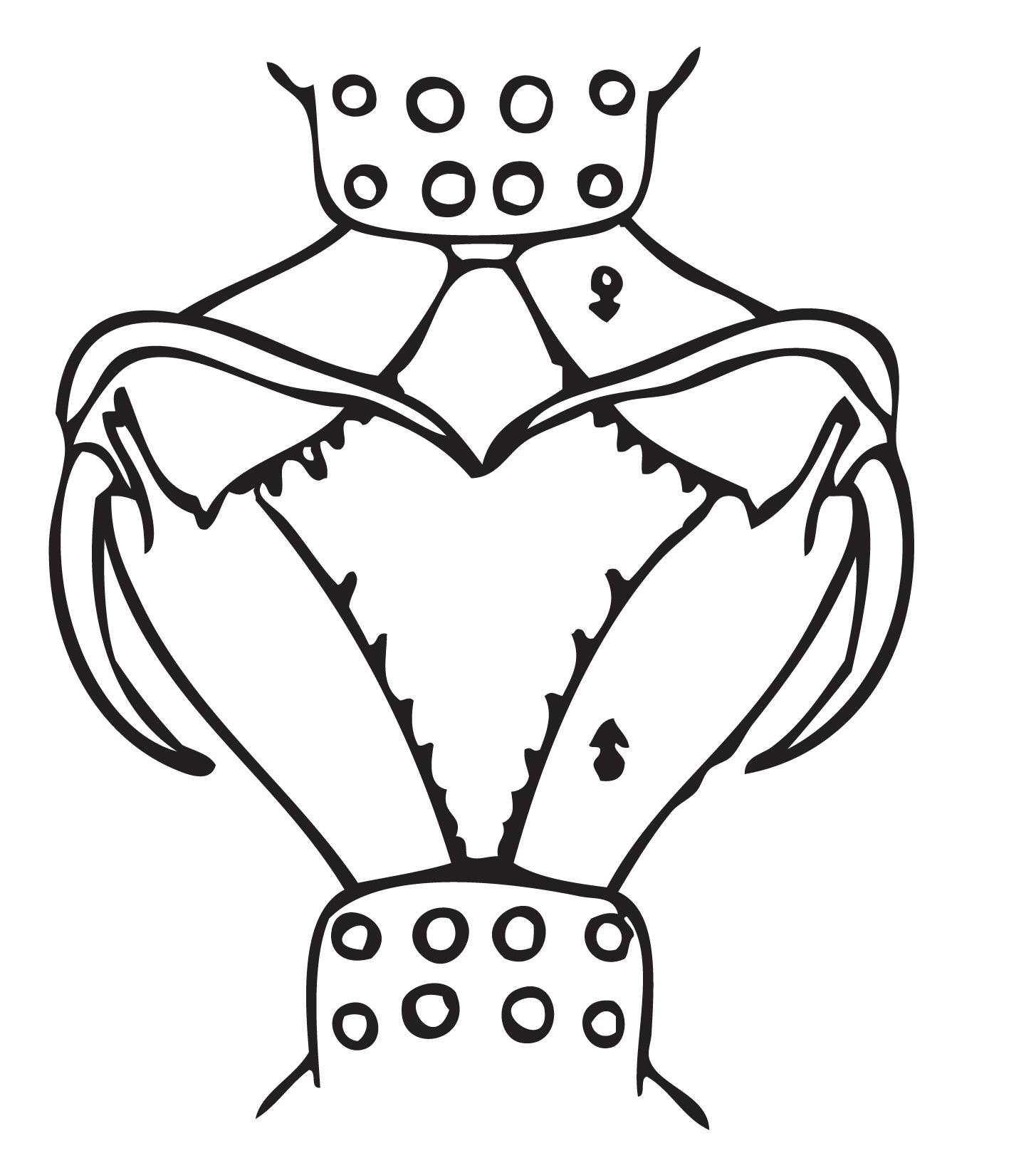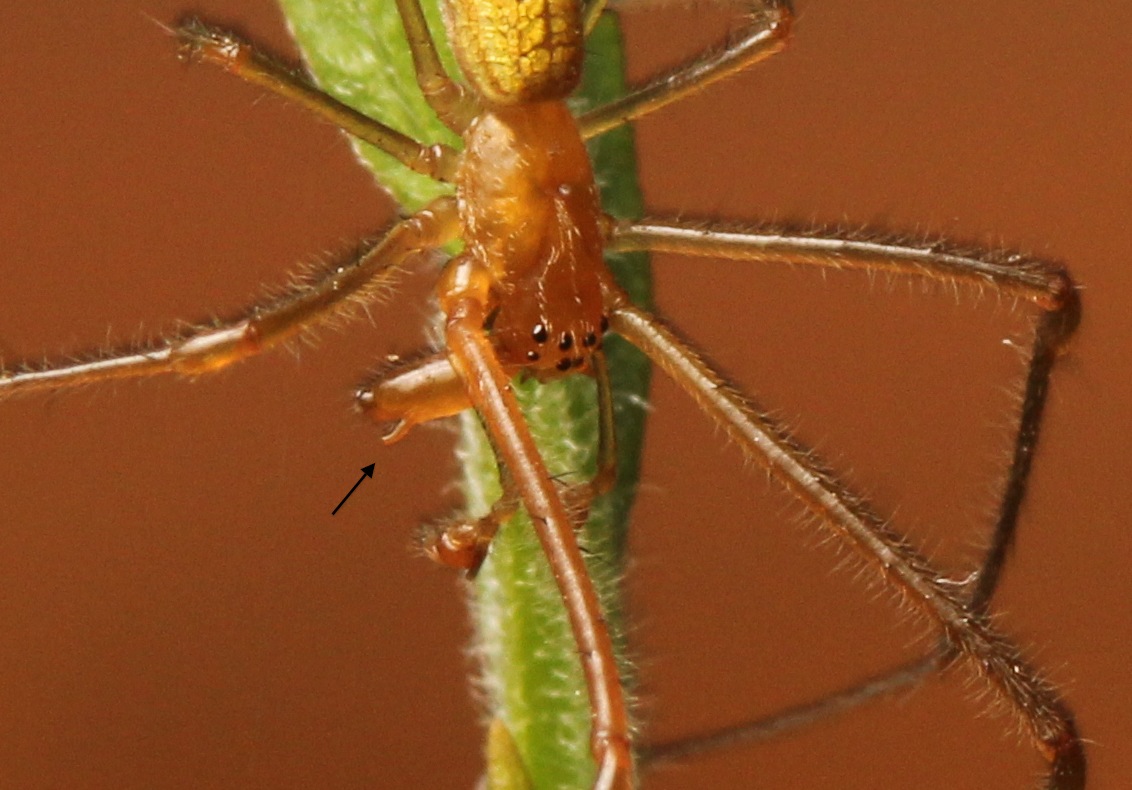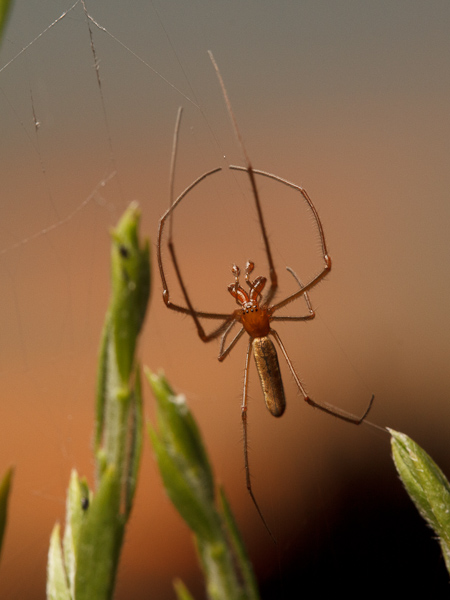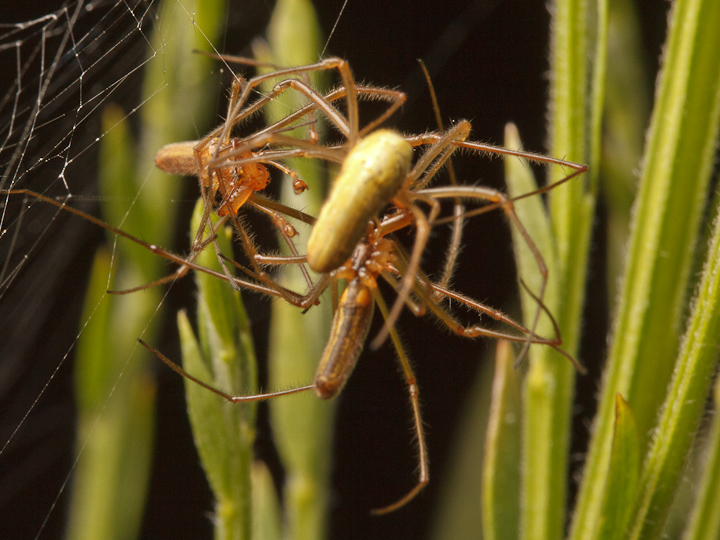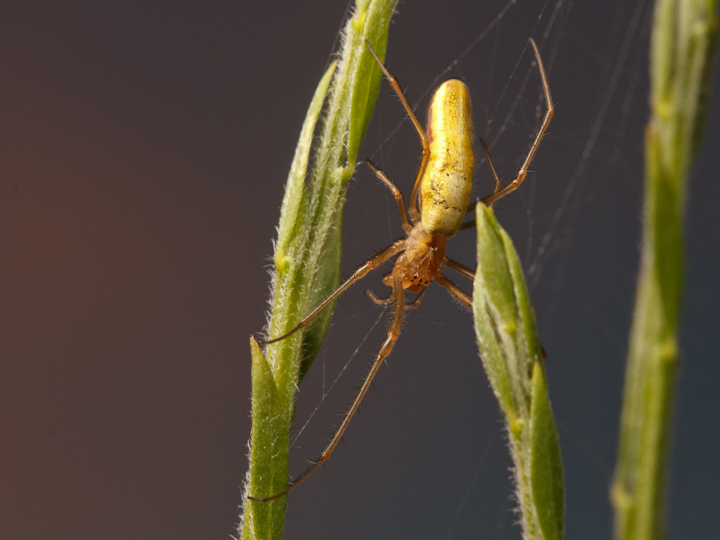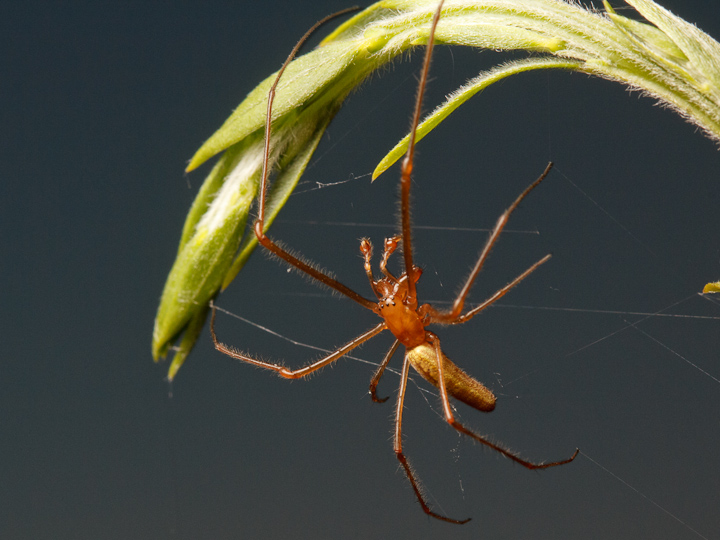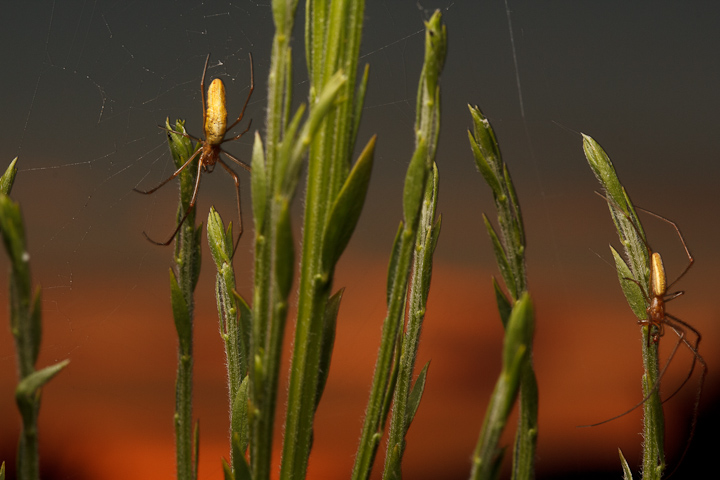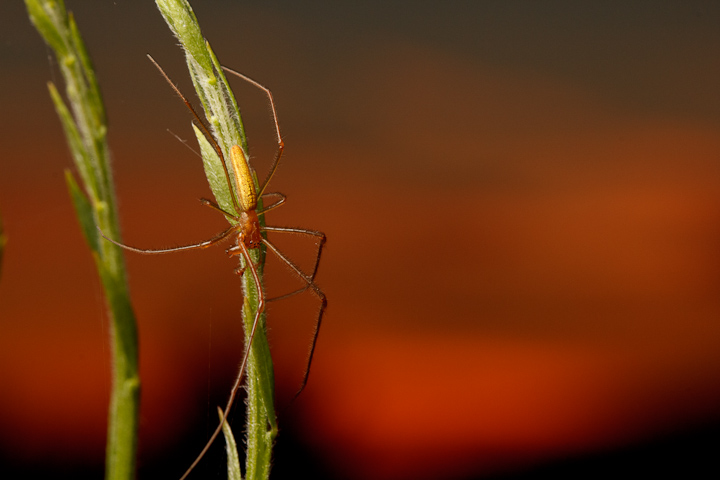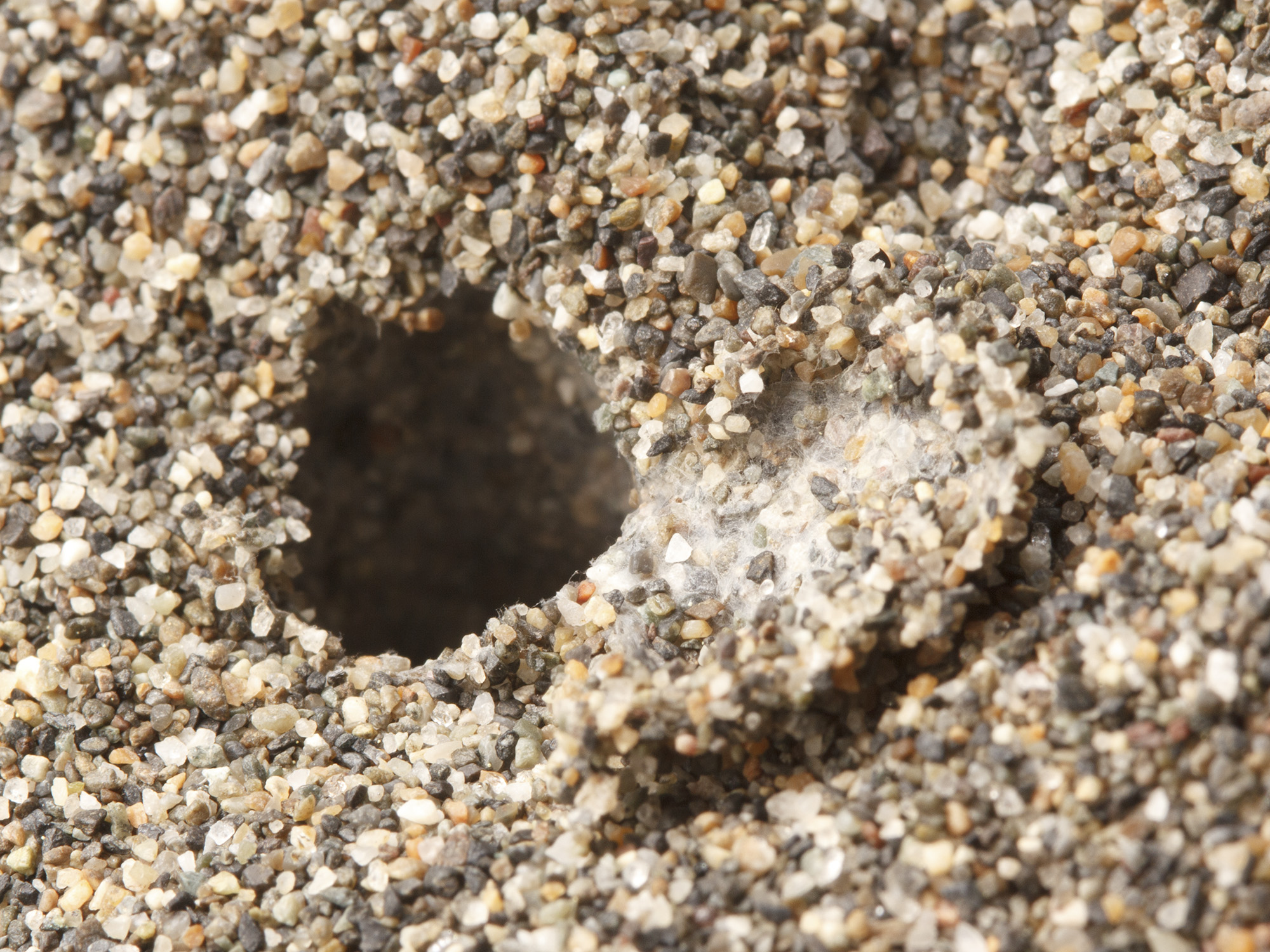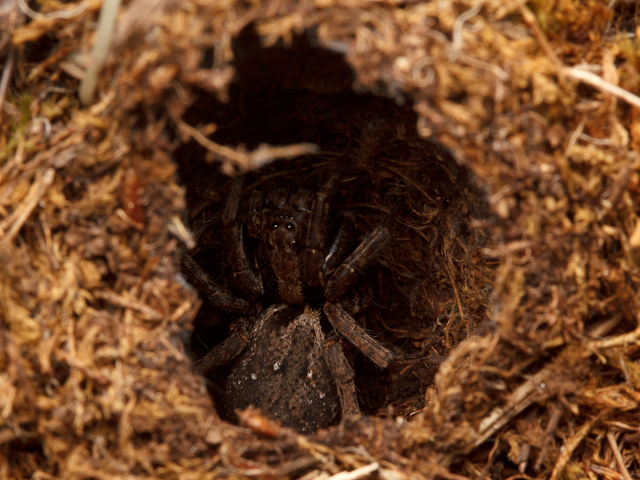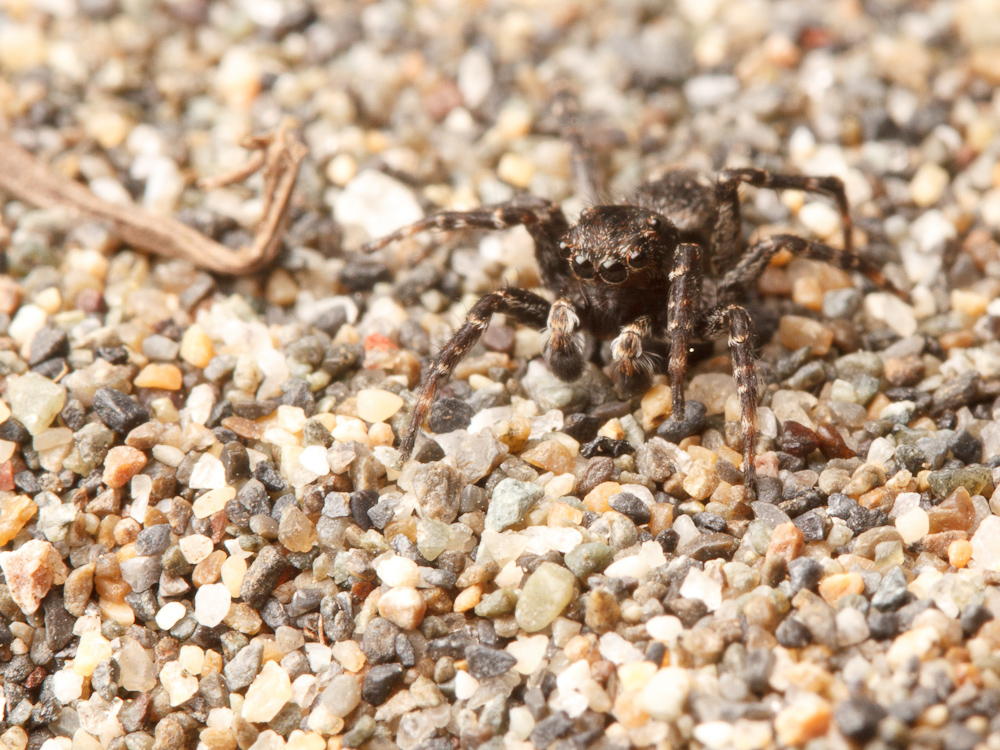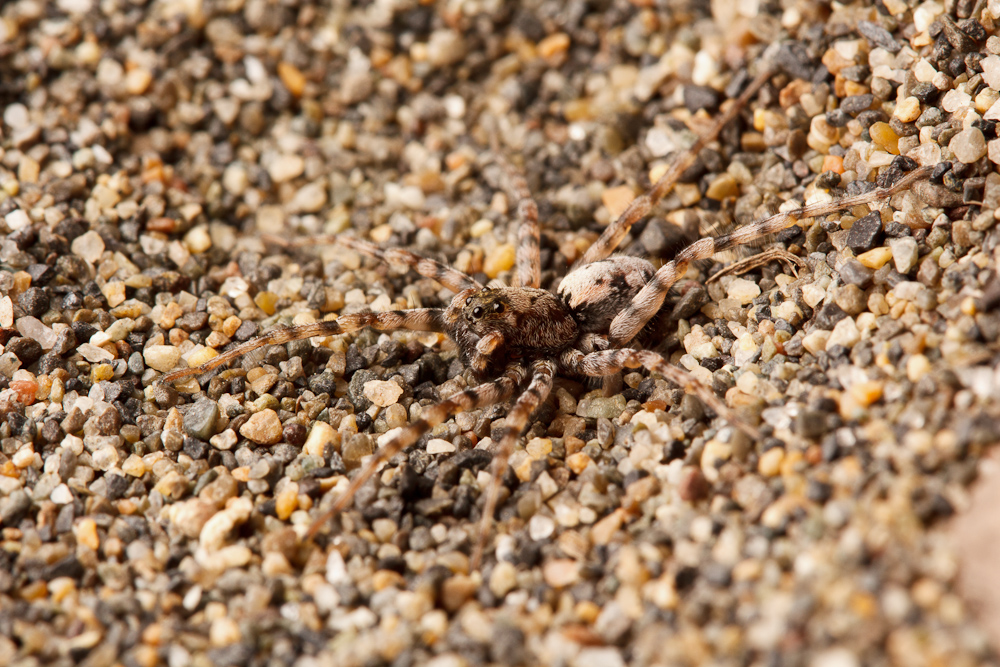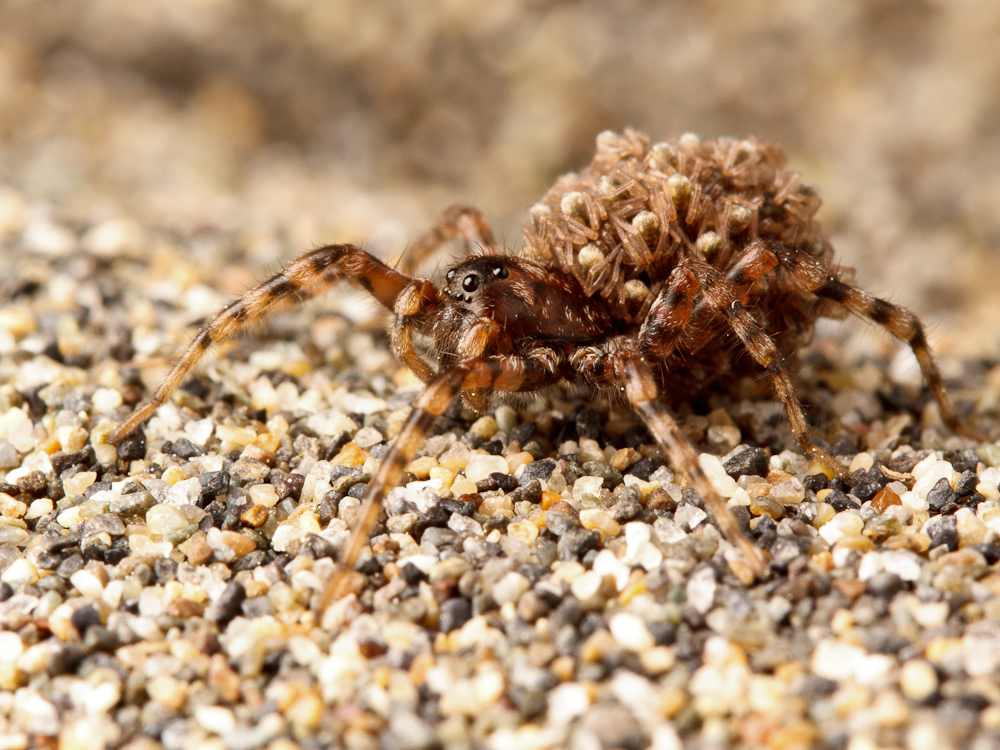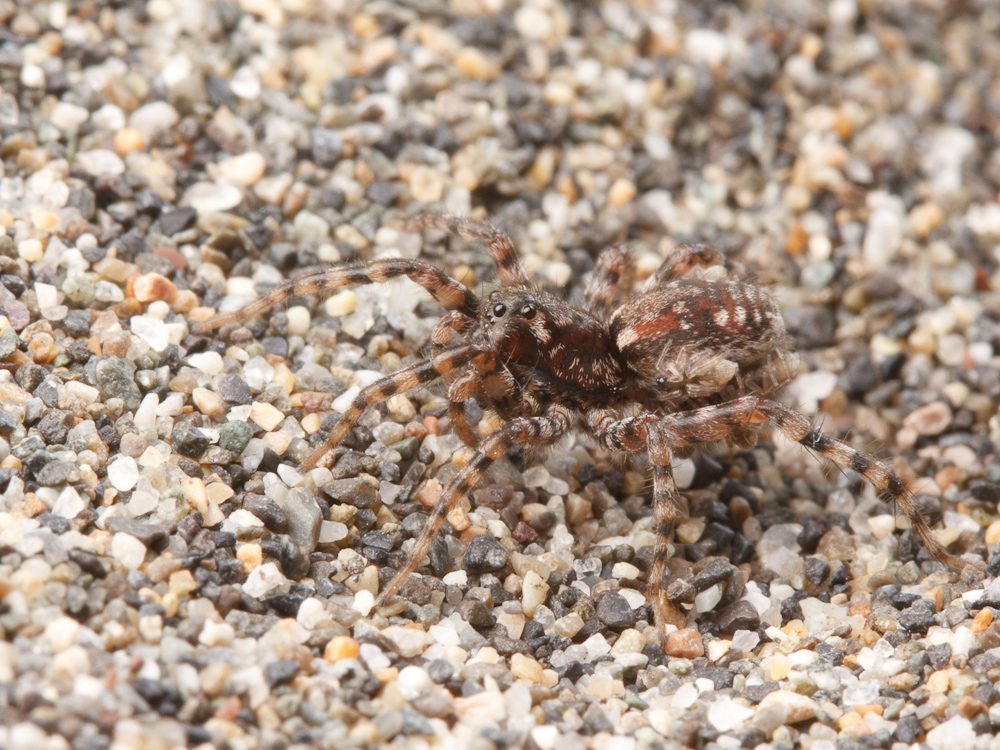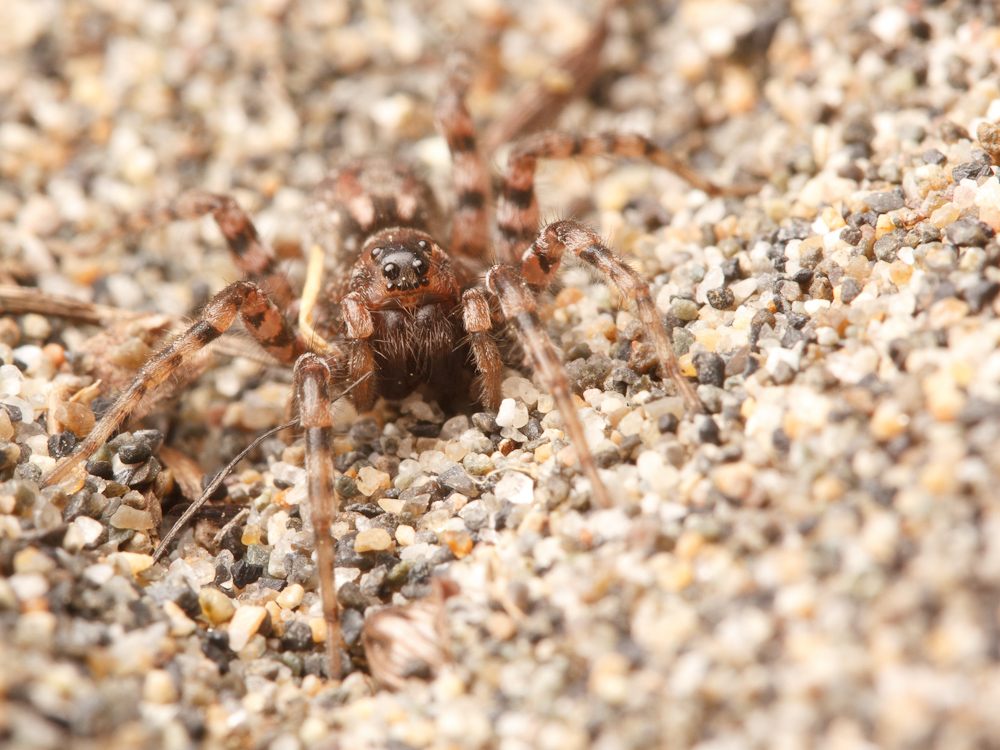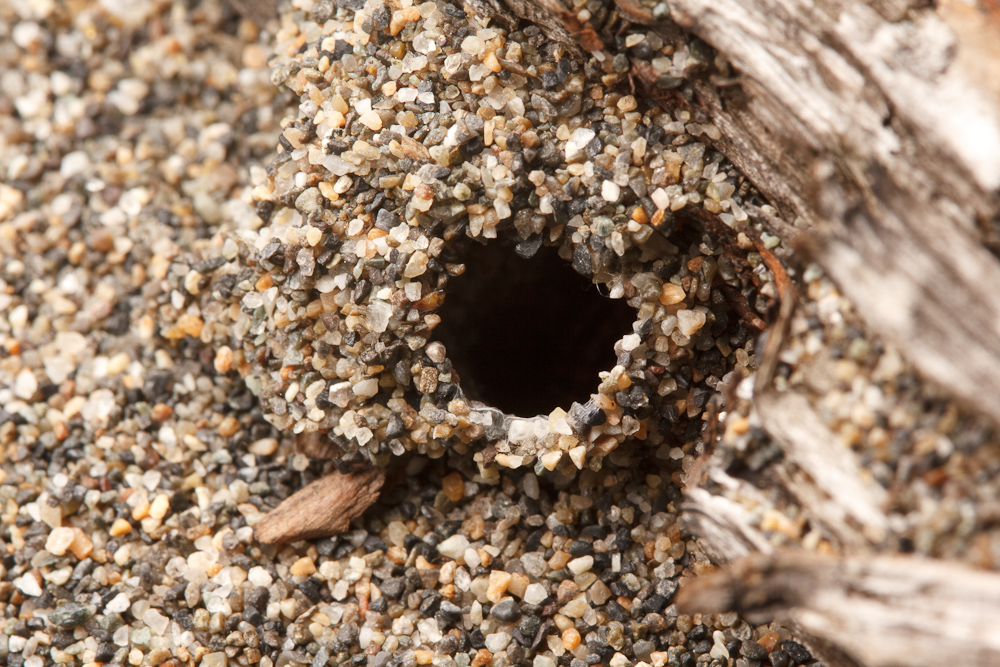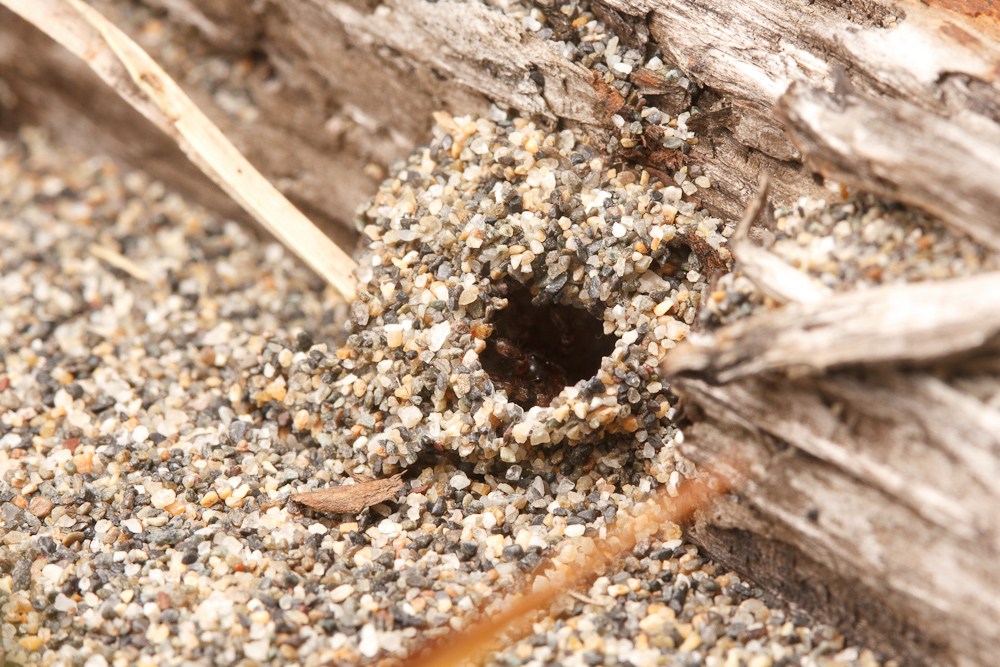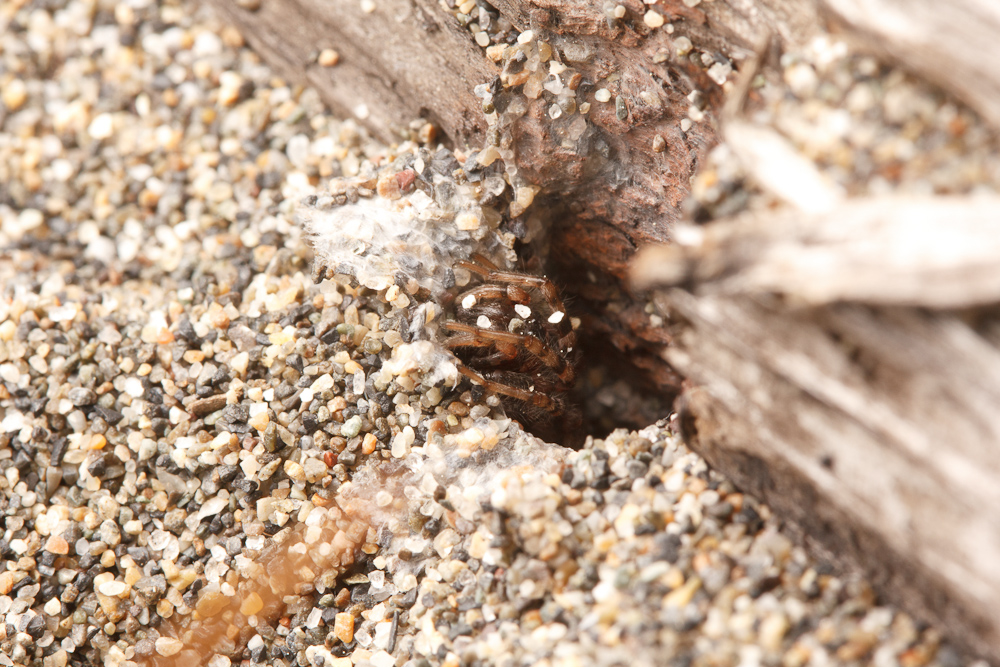This weekend was, to my knowledge, the first ever spider day hosted by Metro Vancouver Regional Parks. Along with a fantastic crew of volunteer spider enthusiasts and park staff, I had the great pleasure of sharing some of the incredible biology of spiders and the joys of being a naturalist with kids and adults alike.
Here are some of the highlights of the day in photographs, kindly provided by Mike Boers and Sean McCann.
Gwylim Blackburn greeted visitors at the become a naturalist station. Here kids could make or borrow all the supplies they might need to be arachnologists for the day! These included ‘pooters’ (aspirators) made out of straws for collecting small spiders, personalized field notebooks, pencils, magnifying glasses, collecting containers, and a customized field guide to the spiders of Iona Beach.
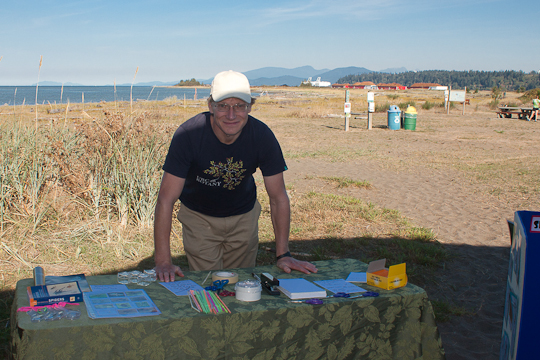
Gwylim with his table of supplies for creating the tools to become a naturalist! photo: Sean McCann
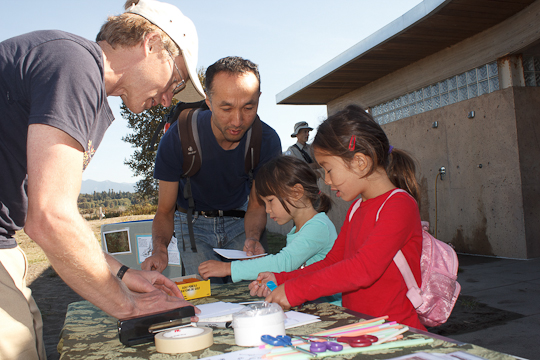
Building pooters and field notebooks. Photo: Sean McCann
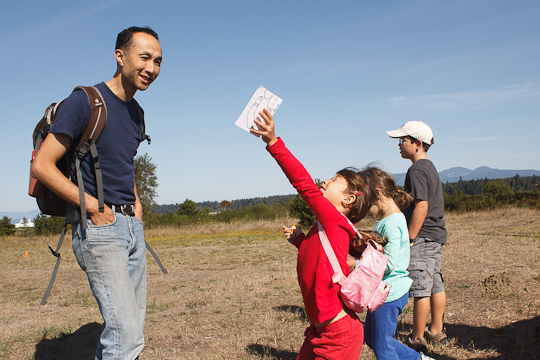
A triumphant young naturalist holds her field notebook aloft, prepared for the adventures ahead! Photo: Sean McCann
Tanya Stemberger served up cricket smoothies and crunchy beetle larvae at the eat like a spider station. Here visitors learned about the health and environmental benefits of eating insects like spiders do! Read more about this part of the event here.
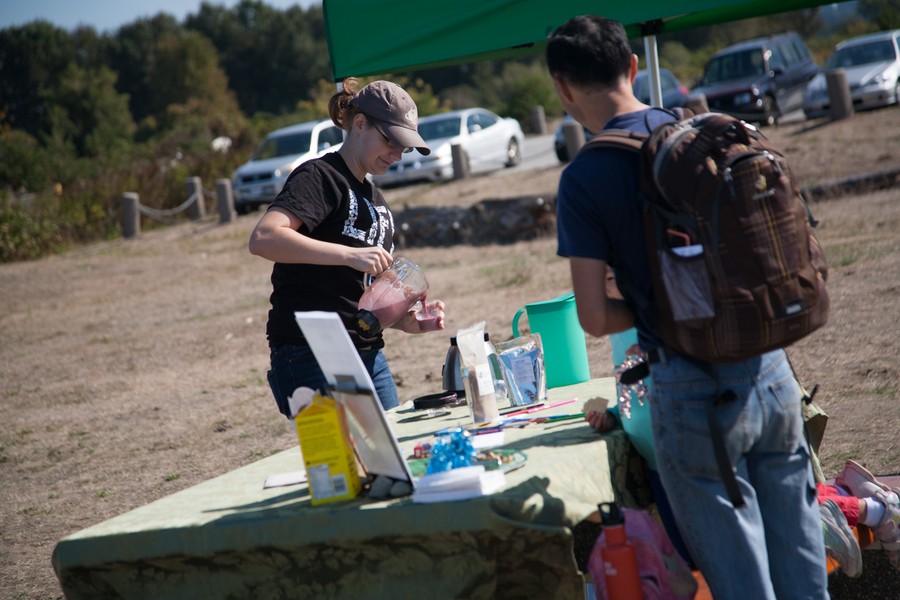
Tanya serves up a cricket smoothie for some kids who are brave enough to try entomophagy! Photo: Mike Boers
Some were a bit sceptical about the idea of eating insects at first.

Photo: Sean McCann
But most were enthusiastic!
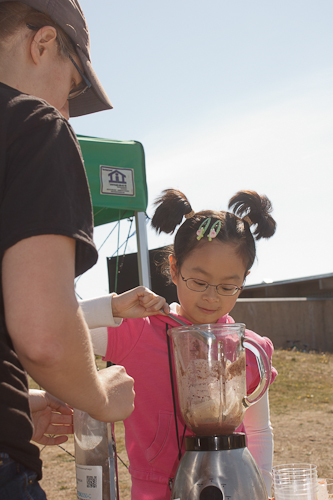
Adding the cricket protein powder to the smoothie. Photo: Sean McCann
In the end, almost everyone accepted the challenge and won a special entomophagy achievement award for their bravery!
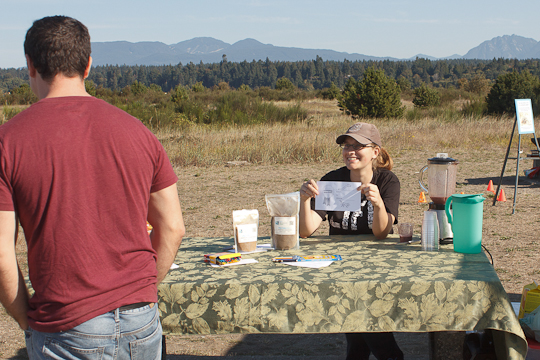
Tanya shows off the highly prized entomophagy award certificate. Photo: Sean McCann
Next, kids got to participate in the spider olympics! The first event was to avoid predation by a spider. The challenge was to to climb through a web without creating vibrations that would ring the dinner bells and alert the resident spider to the presence of potential prey!
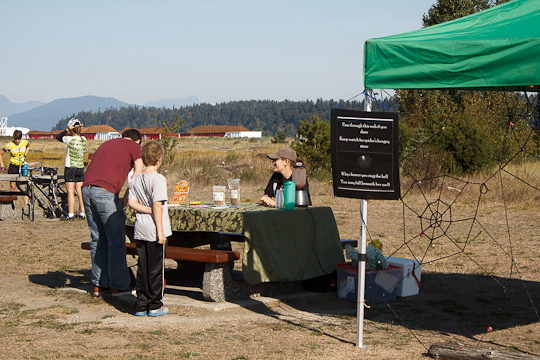
The spider web challenge! Photo: Sean McCann
Other spider olympic events included trying to jump as far as a jumping spider (they can jump distances up to 25 times their body length!) and run as fast as a house spider (330 body lengths in 10 seconds!).
The highlight of the day for most visitors was the spider tour of the beach with Sean McCann, where kids got to learn how to find spiders and put their new field notebooks and pooters to use!
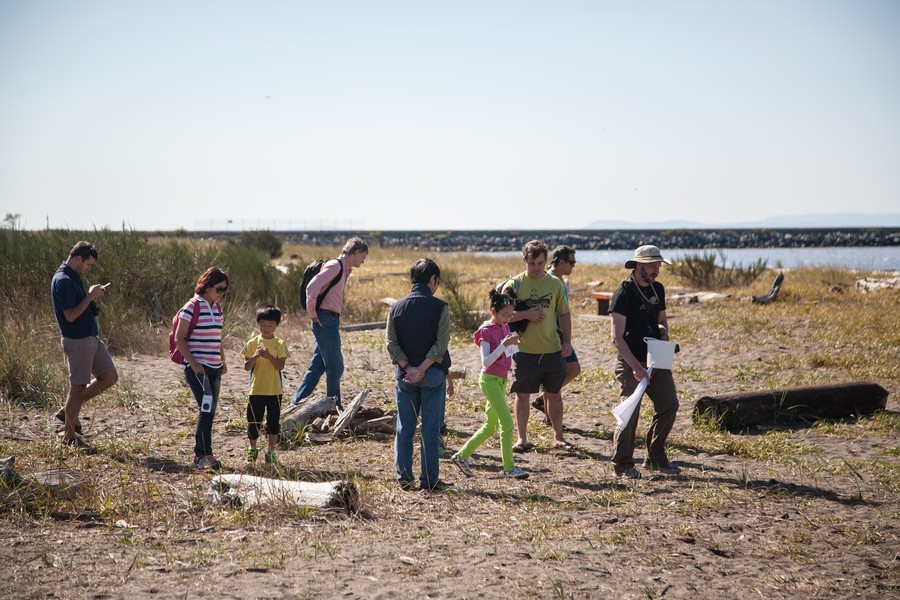
Every hour Sean set out with a new group of naturalists to find the hidden treasures of Iona Beach. Photo: Mike Boers
Sean took his crew of naturalists to several habitats in search of spiders, starting with his favourite: under the driftwood.

Sean demonstrates his log-flipping technique. Photo: Mike Boers
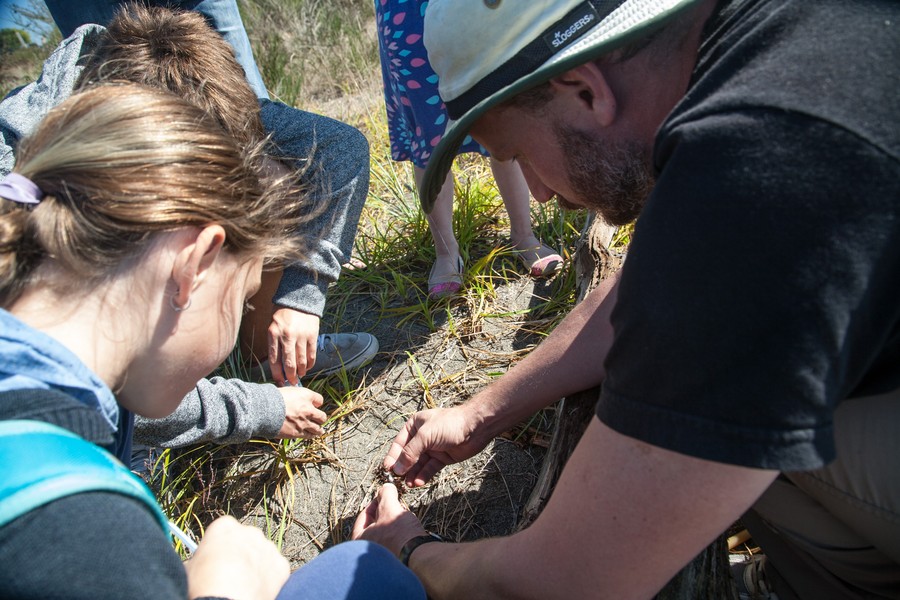
Collecting a specimen! Photo: Mike Boers
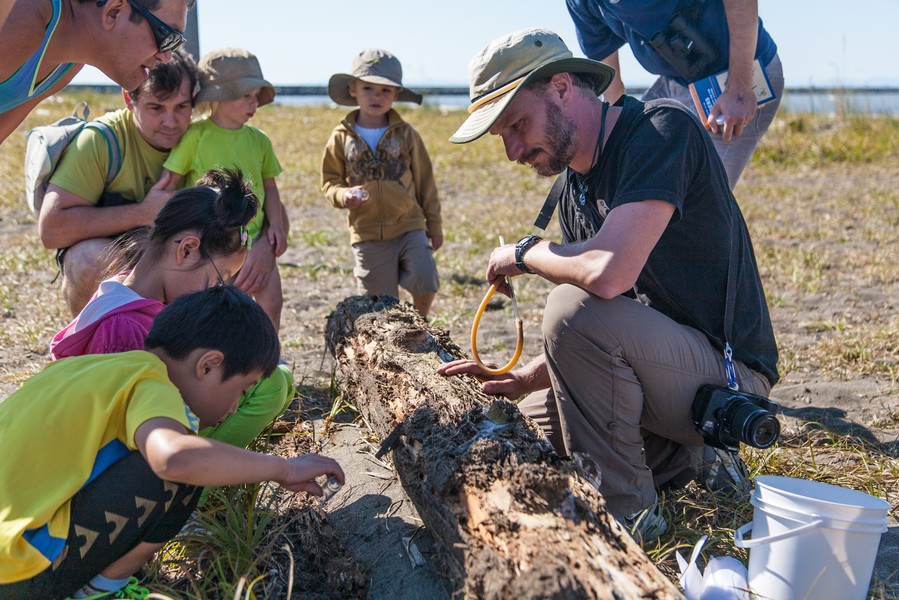
There are all kinds of wonders to be found under the logs if you look closely! Photo: Mike Boers
The tour then moved on to using beating sheets to collect spiders from vegetation, and also included sampling the rich spider fauna on the walls of the washroom building.
Samantha Vibert and I introduced interested arachnophiles (and a lot of unsuspecting cyclists stopping for water/washroom breaks!) to basic spider anatomy and diversity. We had live specimens of several local species representing both wandering hunters and web-builders.
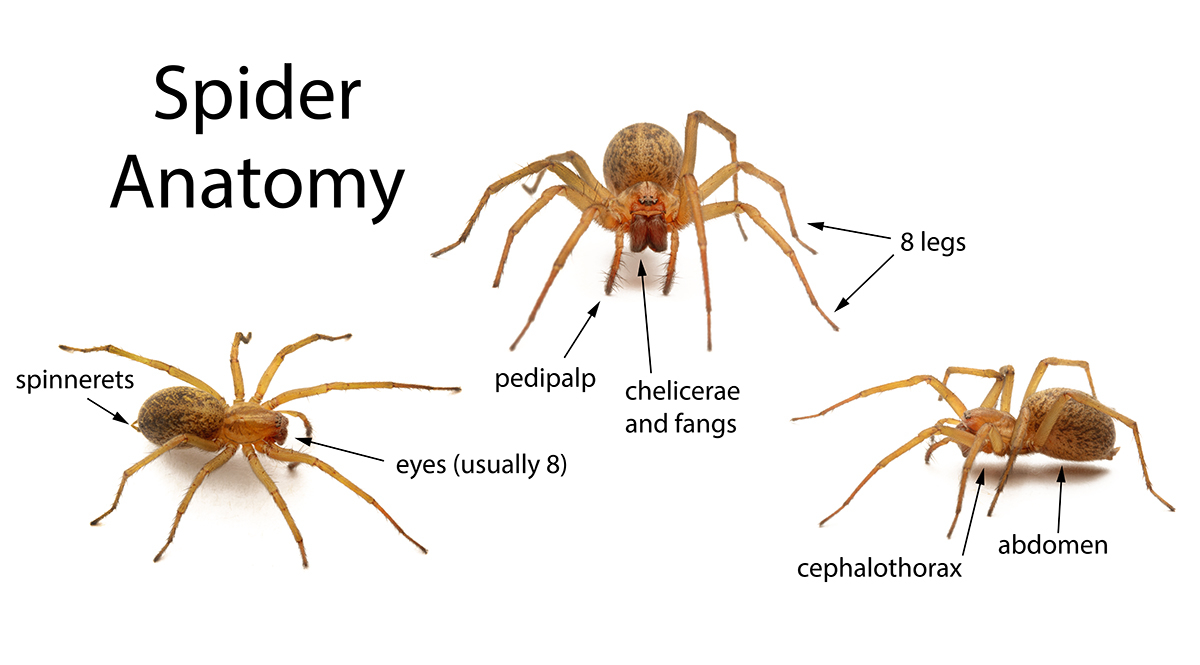
Basic spider anatomy poster featuring a hobo spider, one of the commonest spiders found under the logs at Iona Beach. Created by Sean McCann
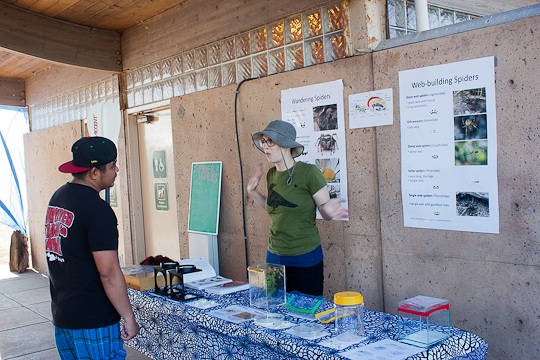
I greet my first visitor of the day, with much excitement and waving of hands. Photo: Sean McCann

Sam and one of our most enthusiastic young arachnologists, who stayed most of the day and went on 3 of the 4 spider walks! Photo: Sean McCann
All in all, I think the day was a great success! We had over 120 visitors, and a ton of fun. I hope it happens again next year!

A wolf spider, Arctosa perita, on the sand of Iona Beach. Photo: Sean McCann
Here’s a small sample of the diverse spiders that we found on the day, or brought from nearby sites (photos by Sean McCann).
- Castianeira longipalpa, an inhabitant of Iona Beach
- These small spiders are generalized ant-mimics
- A long jawed orbweaver collected from the vegetation
- A giant house spider. Along with hobo spiders, this is one of the commonest species under the logs at Iona.
- False black widow, collected from the washroom
- A male orb weaver
- A ground spider in the family Gnaphosidae
- Gnaphosids have distinctive cylindrical spinnerets
- Male western black widow, from Centennial Beach. Black widows do not live at Iona, even though it seems like their kind of habitat.
- Phidippus johnsoni, our largest jumping spider, commonly found at Iona
- Female Habronattus americanus, another jumper that is abundant at Iona




